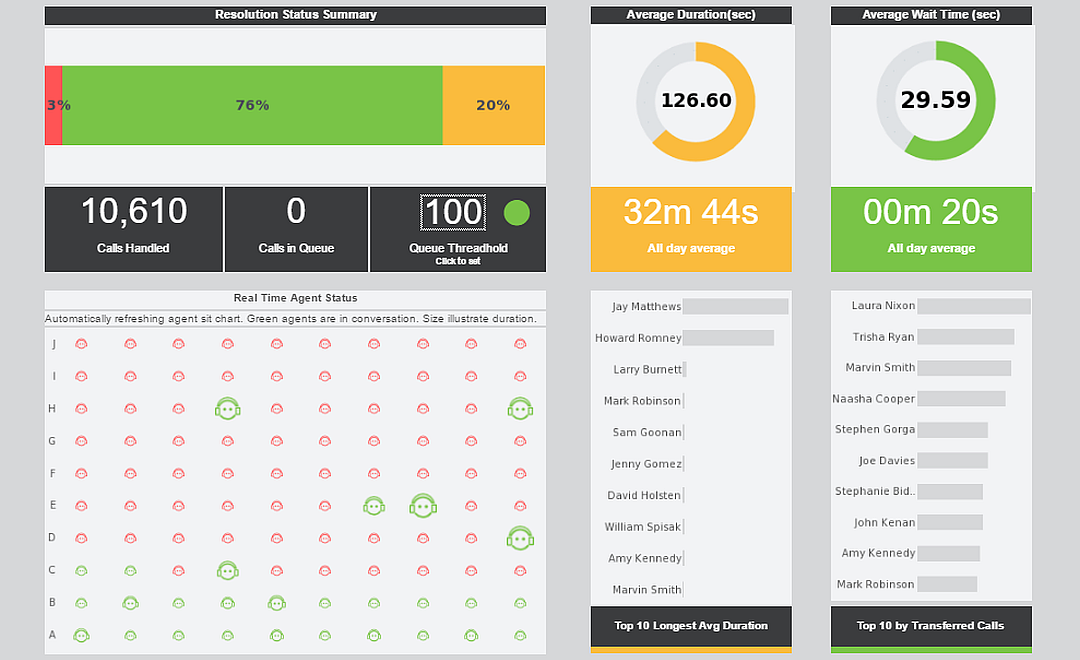InetSoft Seminar: Before You Select a BI Platform
This is the continuation of the transcript of an in-person customer seminar hosted by InetSoft on the topic of "How Performance Management Consultants Work." The speaker is Christopher Wren, Principal Consultant at TFI Consulting.
So you have to go through that whole implementation planning before you select a BI platform. You have to figure out what are the things that I am going to address within that organization. What are the goals that we want to meet, and here are some that are just arbitrary for maintenance organization, and then here is what the expected payback is if they can achieve that change. And that of course is also used then to secure the resources that you are going to have to have in order to succeed with that change.
So what are some of the best practices to ensure success? You have to ensure leadership sponsorship, and you have to ensure their commitment. You have to maintain your leaders in that area just like your children. And I’ll give you a little story. So the leadership in an organization, they recognize that there is a need for change. They are going to be onboard with it, and guess what, next month they have another burning platform, maybe some regulatory thing comes out, or they are about to be taken over or whatever.
 |
View a 2-minute demonstration of InetSoft's easy, agile, and robust BI software. |
Guess what, their focus shifts. So it is your job as a change agent within this organization to ensure that you keep these people right on focus. And so I call myself a professional nag which is really what I am. So all I do is really I just hold them to what they said they were going to do and remind them of the commitments that they have expressed, and of course, I do a lot of other things too, but that’s the primary part.
You have to develop measures that support each strategy for each perspective at each level. Yet, I would never want to see thousands of metrics. I am not sure what you would get out of that. You have to seek a balance among measures and ensure linkage to processes and procedures. If you have processes where there are no metrics associated with them, and the metrics are only associated with your strategy, guess what, there is a complete disconnect.
How are you going to evaluate the processes that you are executing are actually going to be helping you to achieve that strategic goal? You have to develop some solid baseline data, and you have to develop equal number of measures for the past, present and the future.
 |
View live interactive examples in InetSoft's dashboard and visualization gallery. |
Now, by all means, I have done this for a while, it is extremely difficult to identify meaningful leading indicators. And that’s kind of like the Holy Grail because when you find one, and it actually works, guess what, you are going to put it away in your back pocket, and you are going to pull it out the next time, and you are going to try and find more and more of it.
Everyone can develop lagging indicators. Everyone can eventually streamline what you are going to look at and what you are not going to look at. The leading indicators is really what gives you the power. It gives you the power to foresee the future; it gives you the power to keep people directed; it gives you the power to maintain a focus.
You also cannot over-rely on detailed input and output measures and processes. Yes, I want process measures, measures that are related to processes. I do not want to see where you are going to measure cycle time to the end of degree of every little step and so on because quite truthfully, it probably doesn’t help.
Unless you are in a manufacturing environment where you are really producing hundreds of thousands of widgets, and it comes down to microseconds of each widget going through whatever process, it's not really a beneficial item in most organizations.
 |
Read the top 10 reasons for selecting InetSoft as your BI partner. |
You need to limit the number of measures. We talked about that. I work with nuclear companies, okay, nuclear organizations. Of course, there is a justification for how they are measured and the extent that they are being measured. But quite frankly, I mean some of these plans you get a briefing book that’s two inches thick that has hundreds of thousands of numbers in there and you are going like, nobody is going to look at that.
You know what the best test is to see if anyone looks at it, just stop sending it out one day. And I tell you what, in three out of four cases, you are going to get less than 10% of the people to actually send you a response, hey, where is that report? And usually those are the people that are responsible for the publication and production of that book. Hardly anyone else looks at it. Yes, they have to have it, and yes they do it, but you know what, nobody ever looks at it.
| Previous: Top Strengths Assessment Chart |
